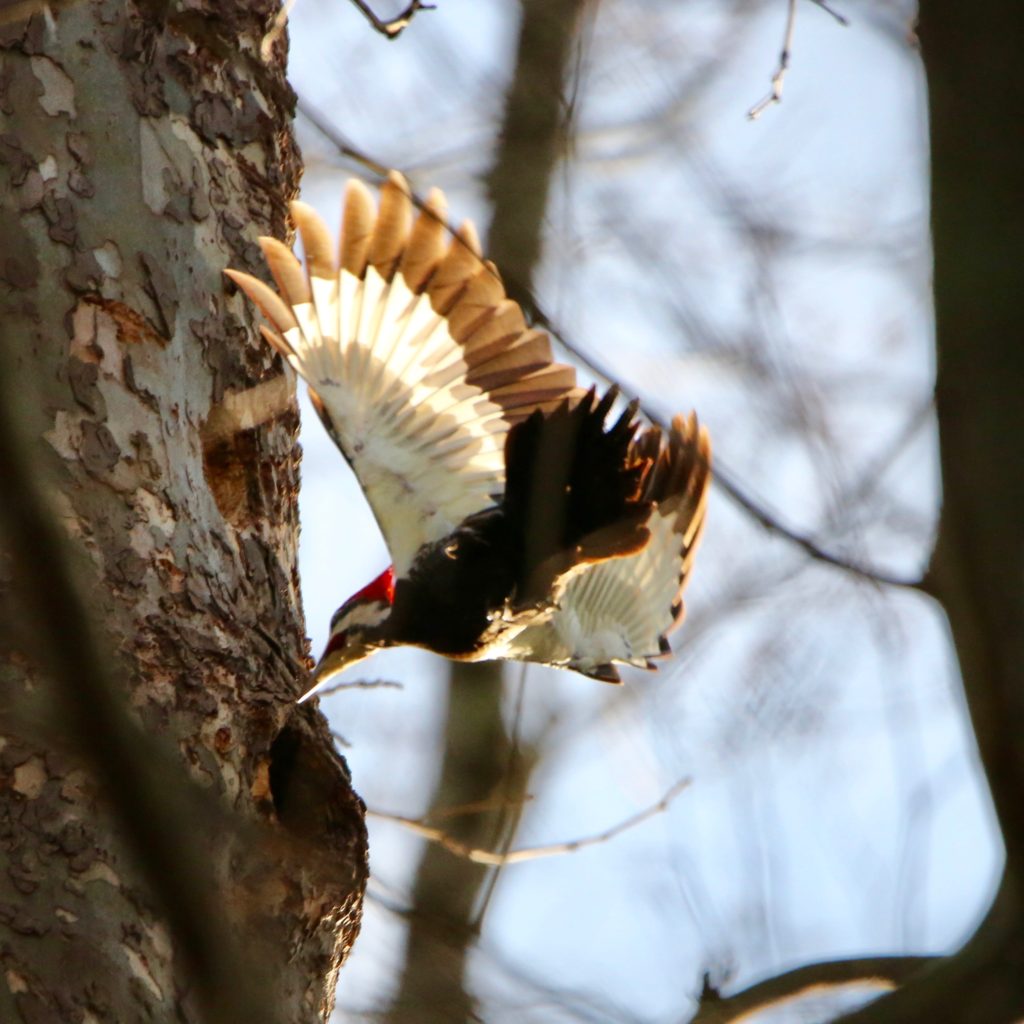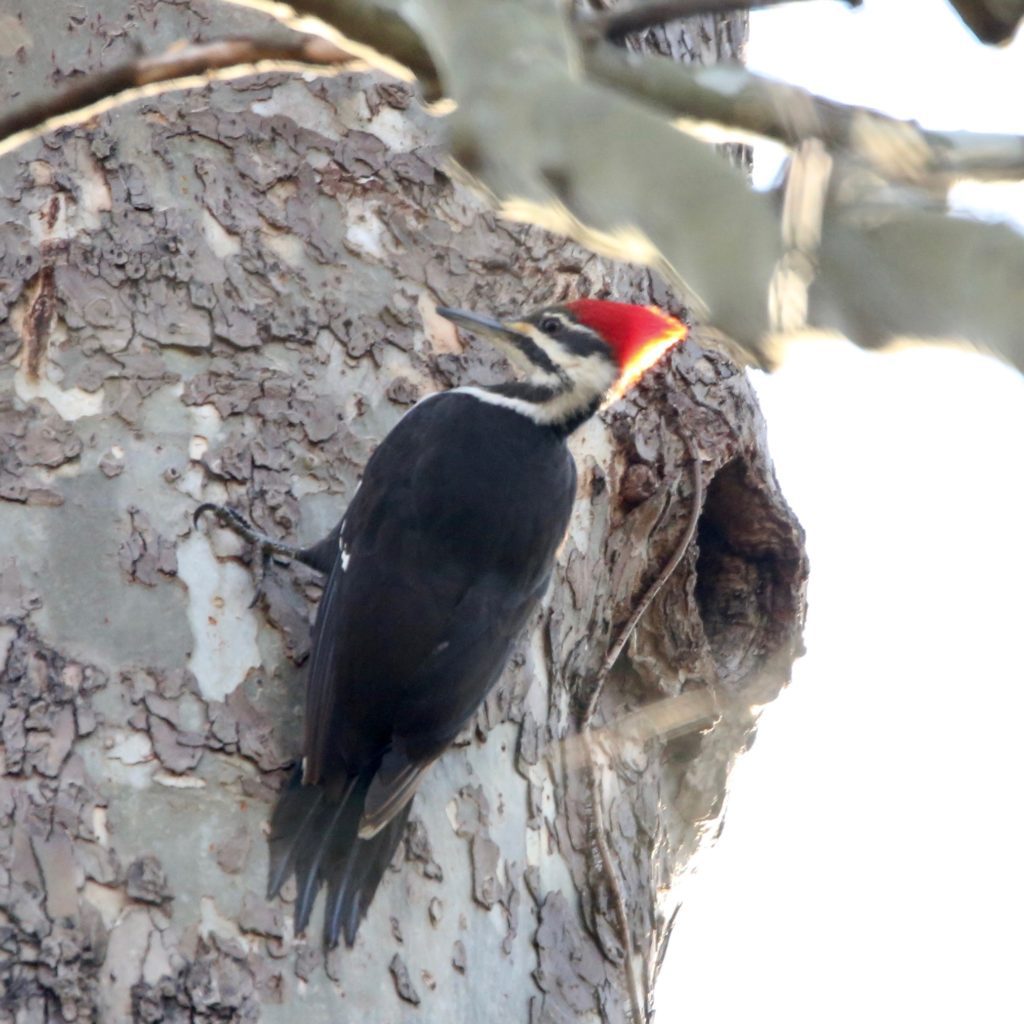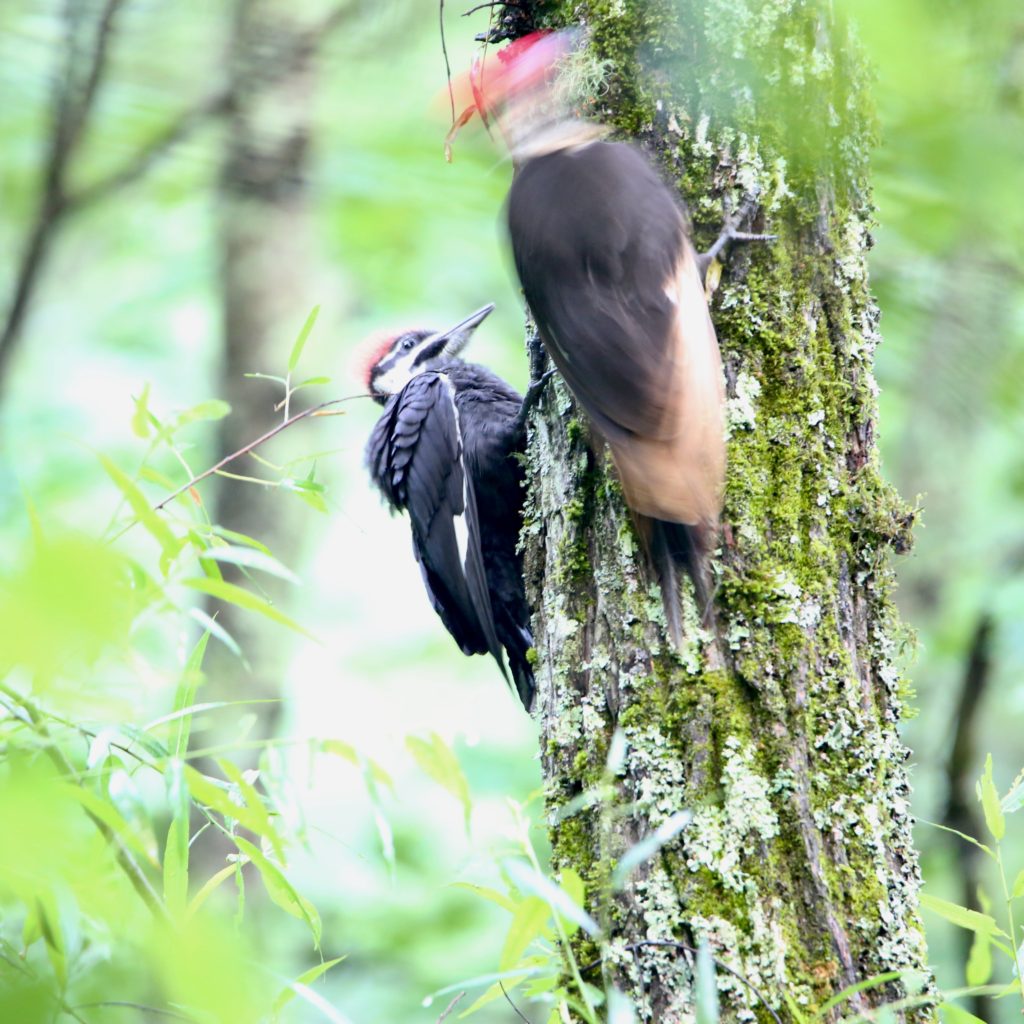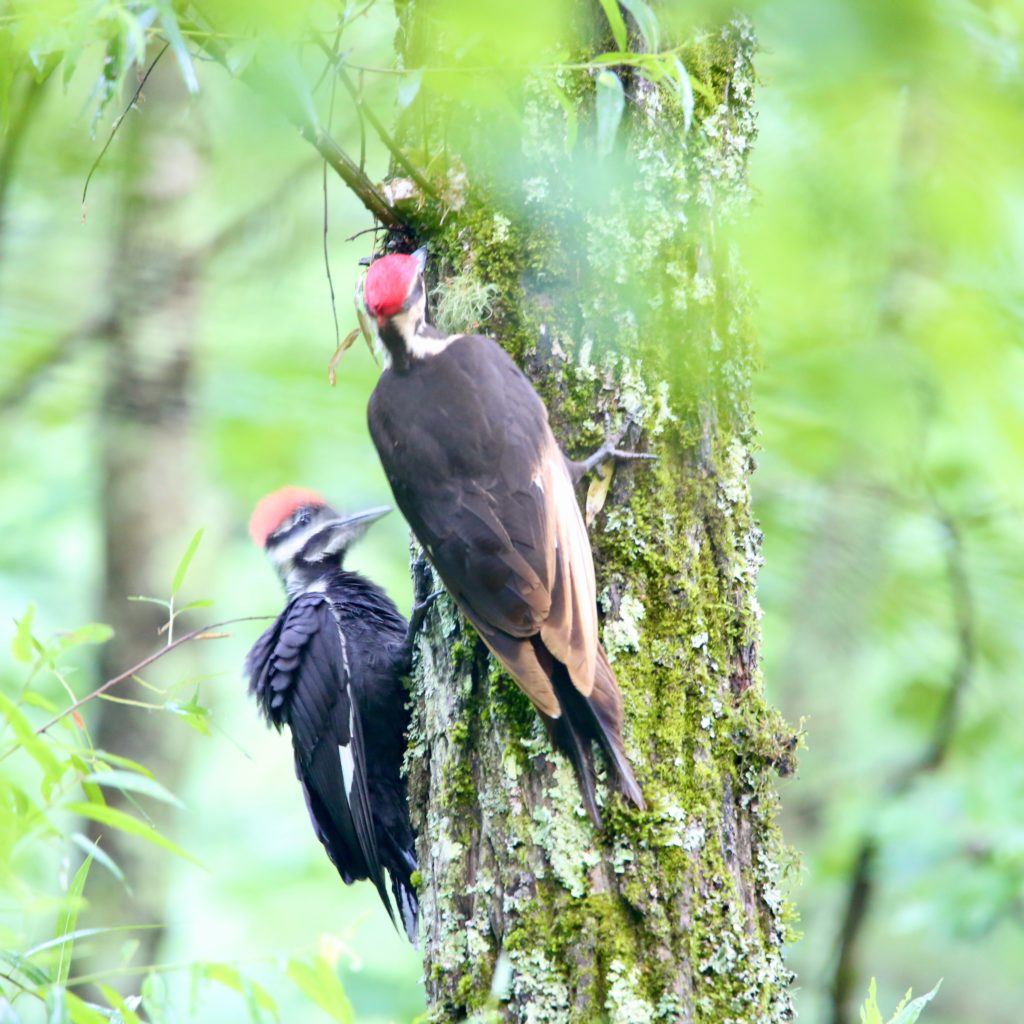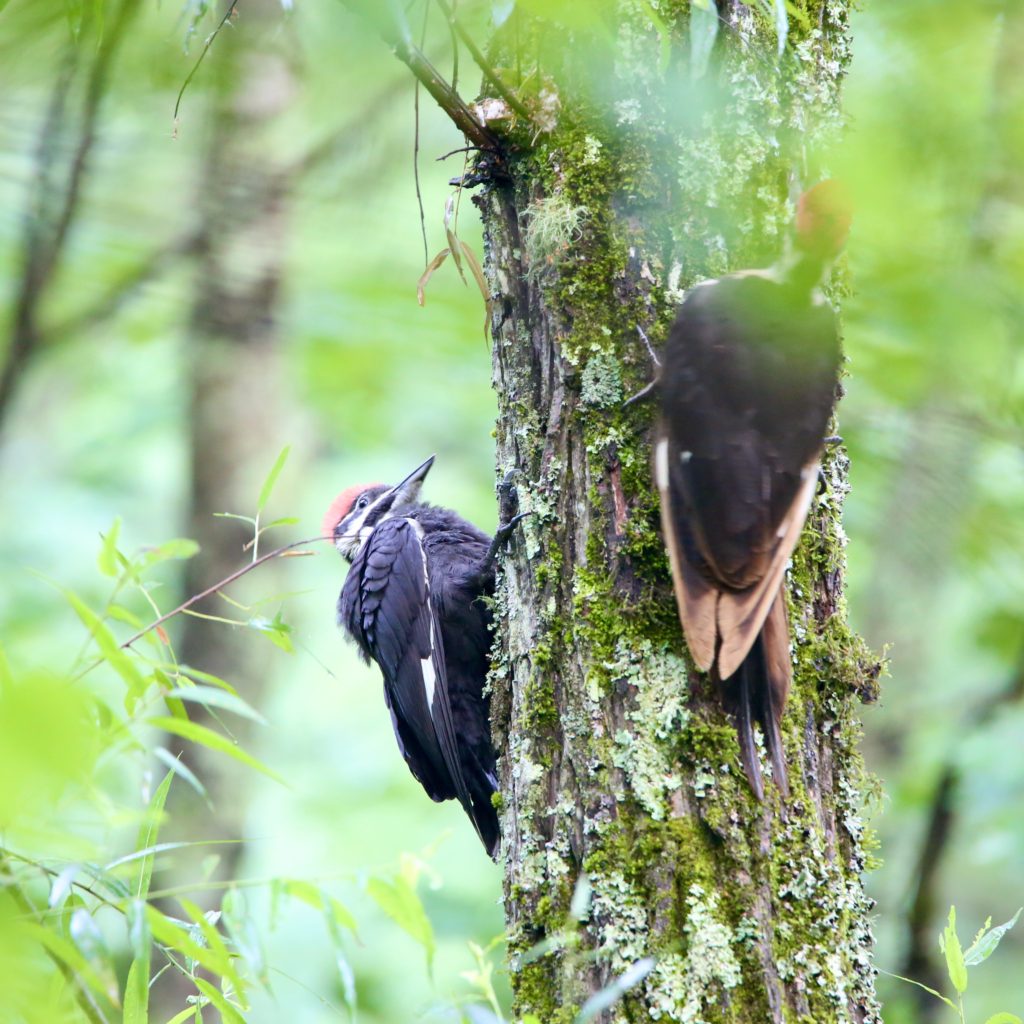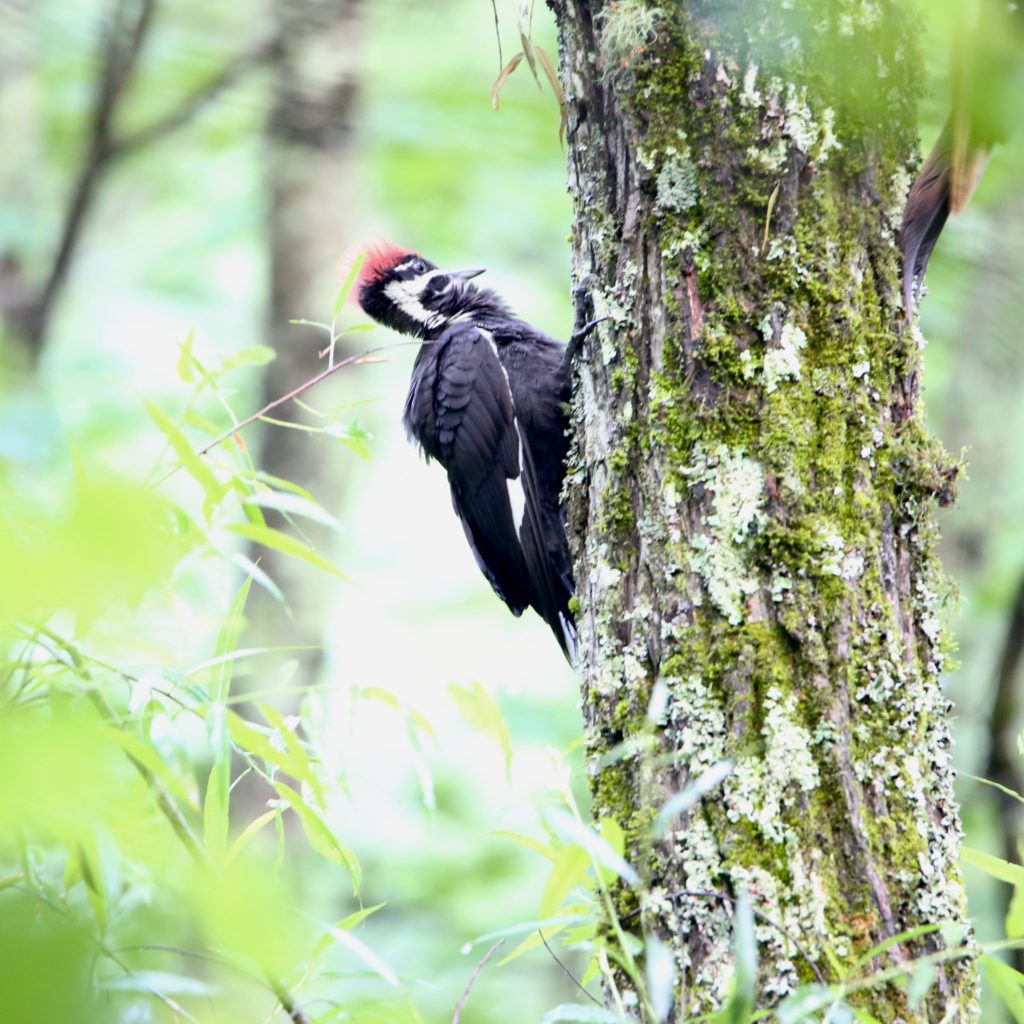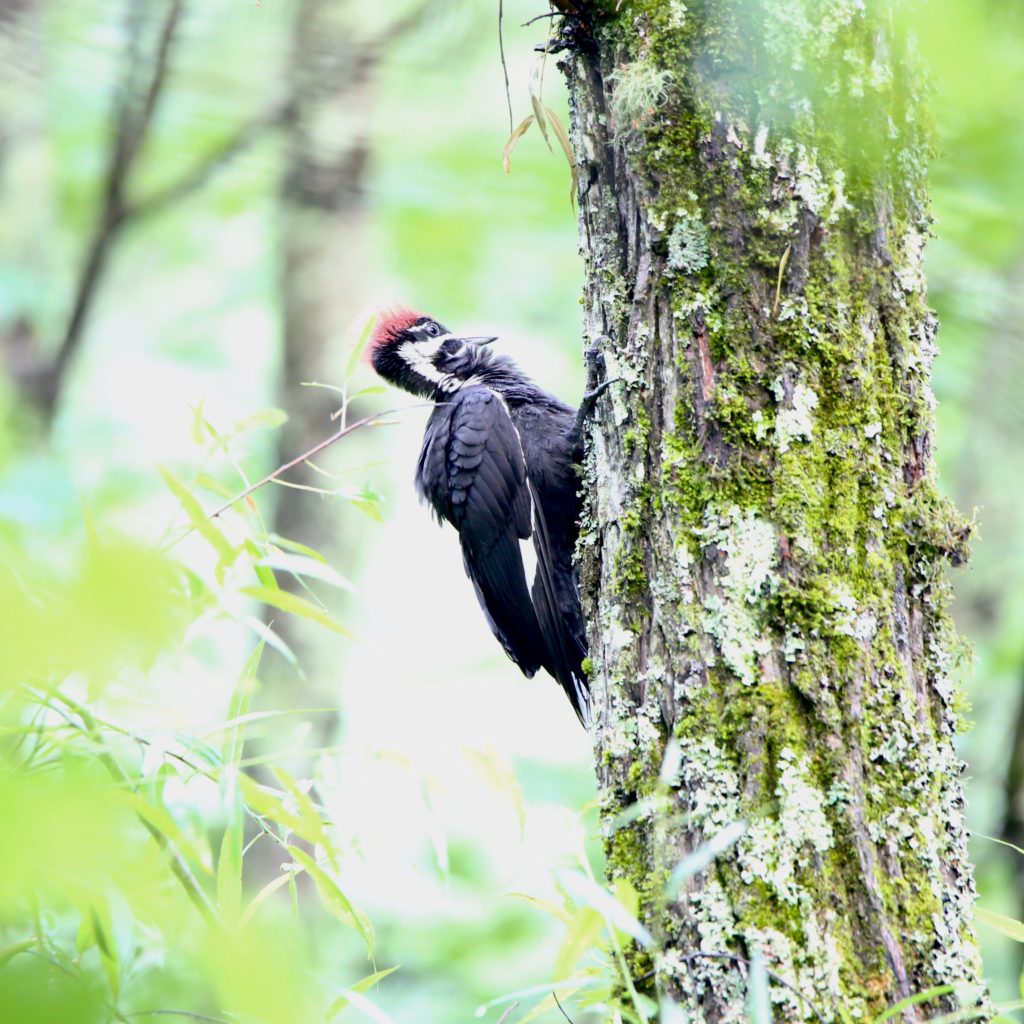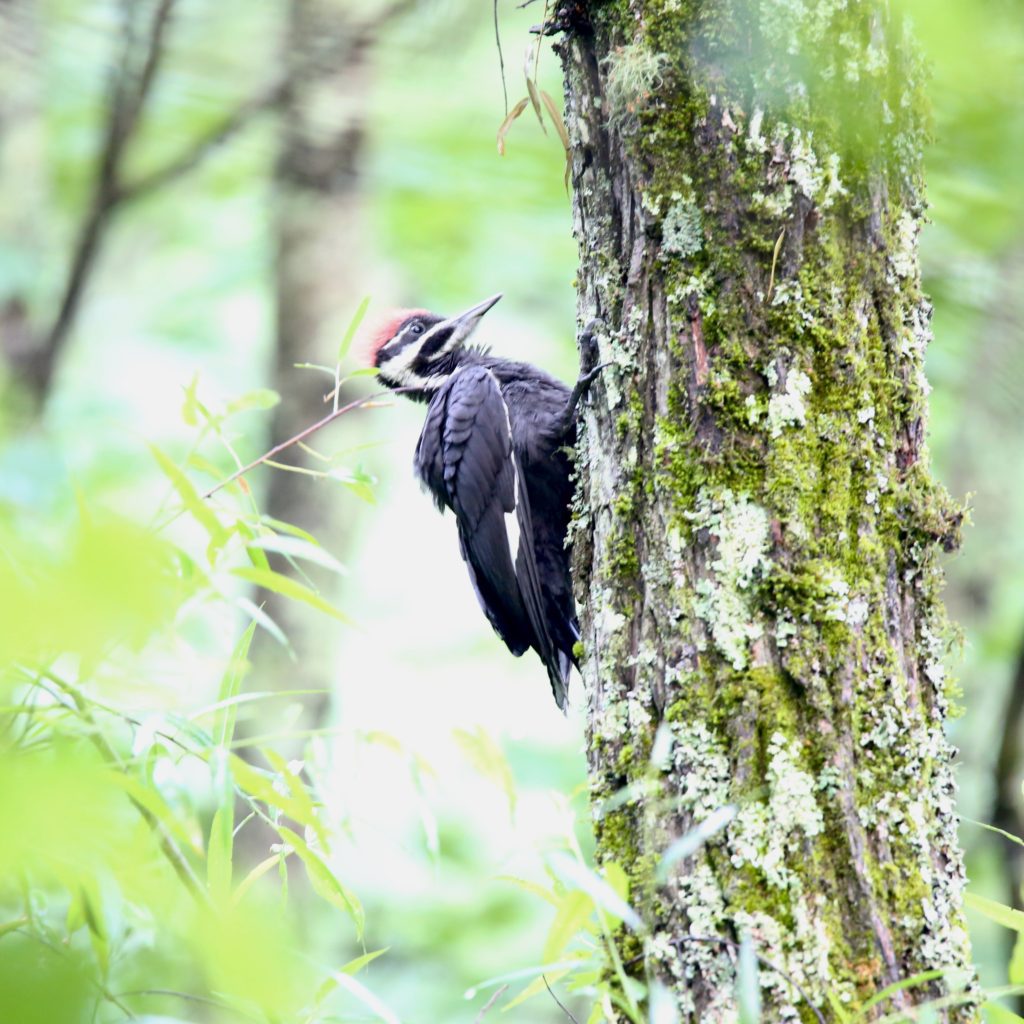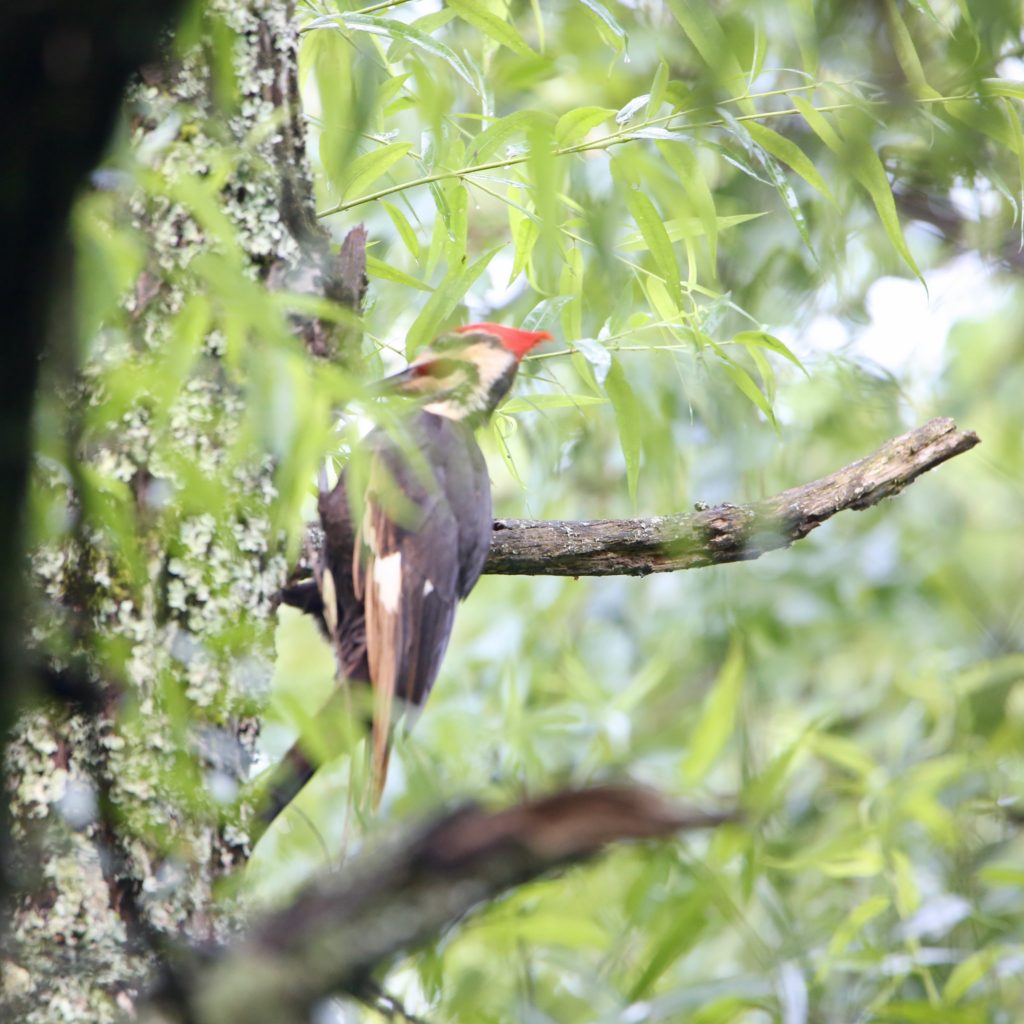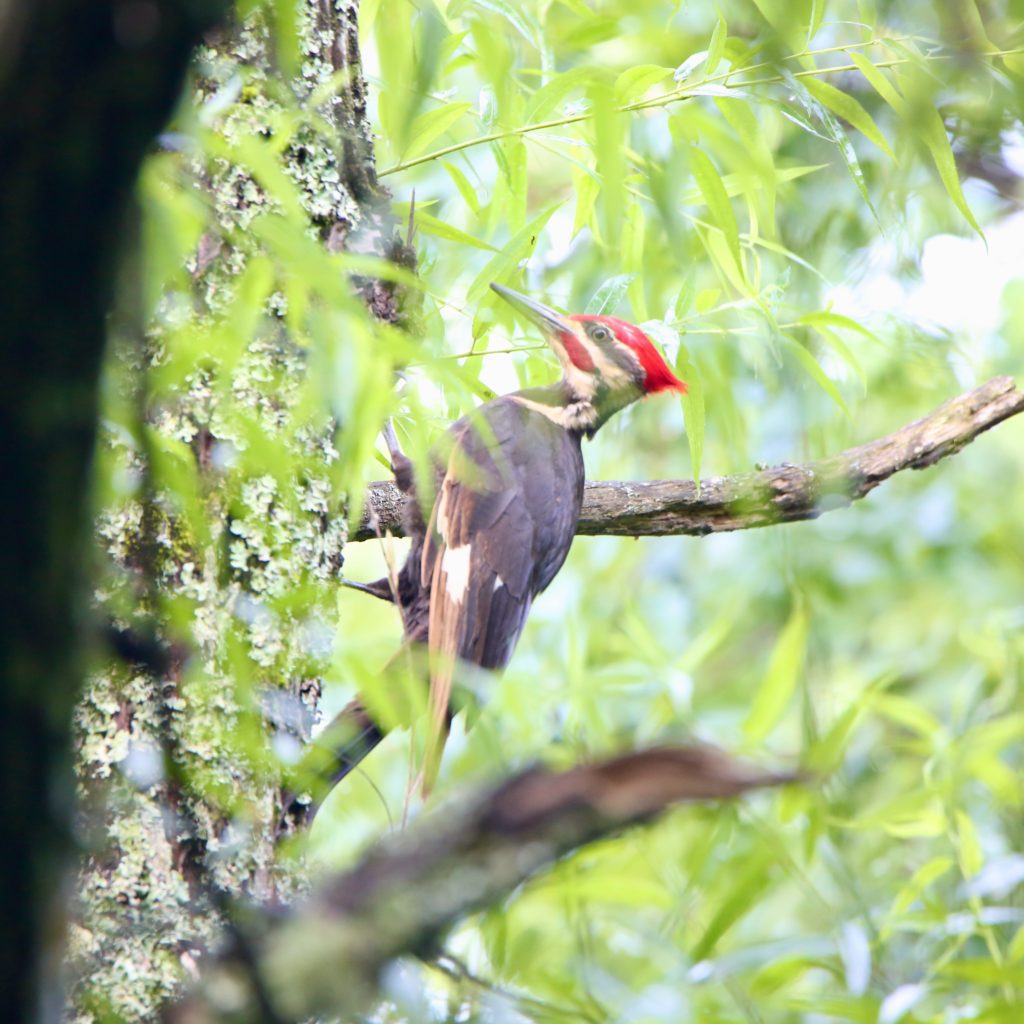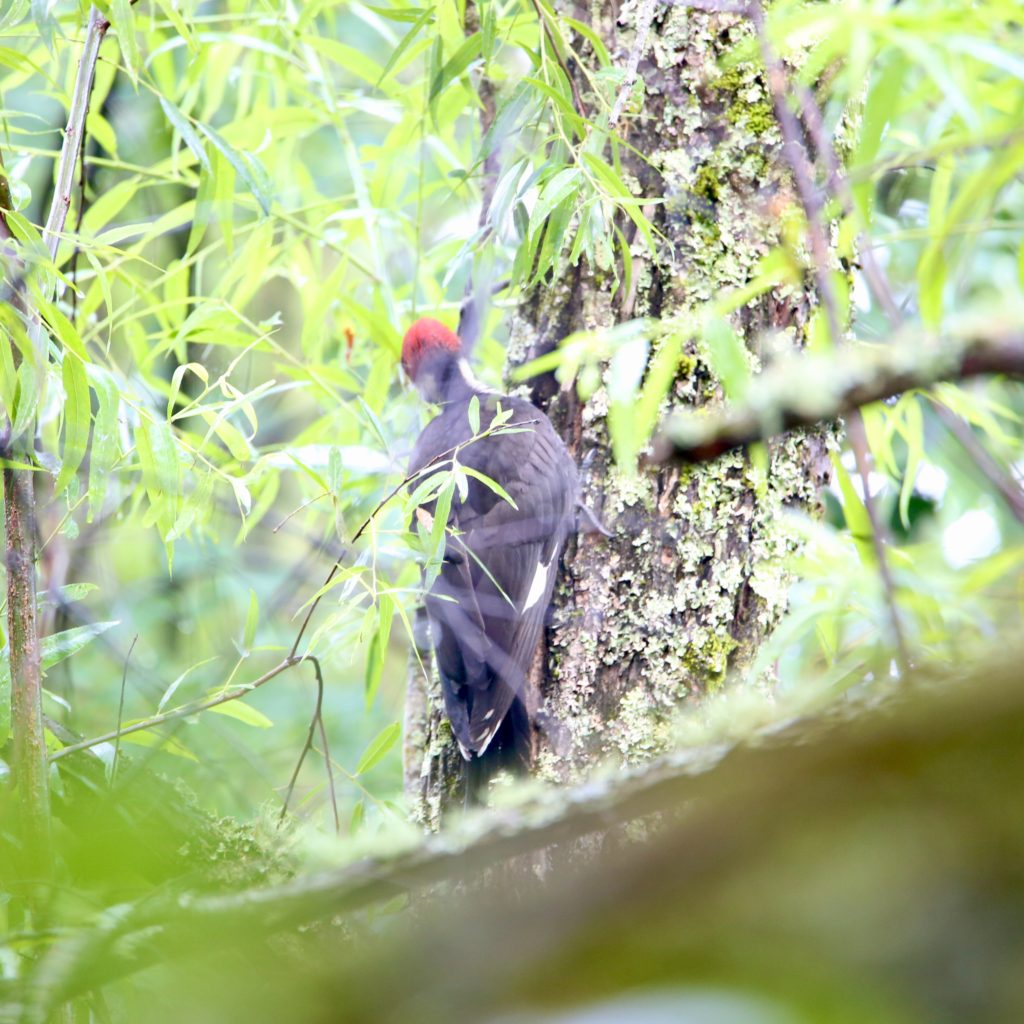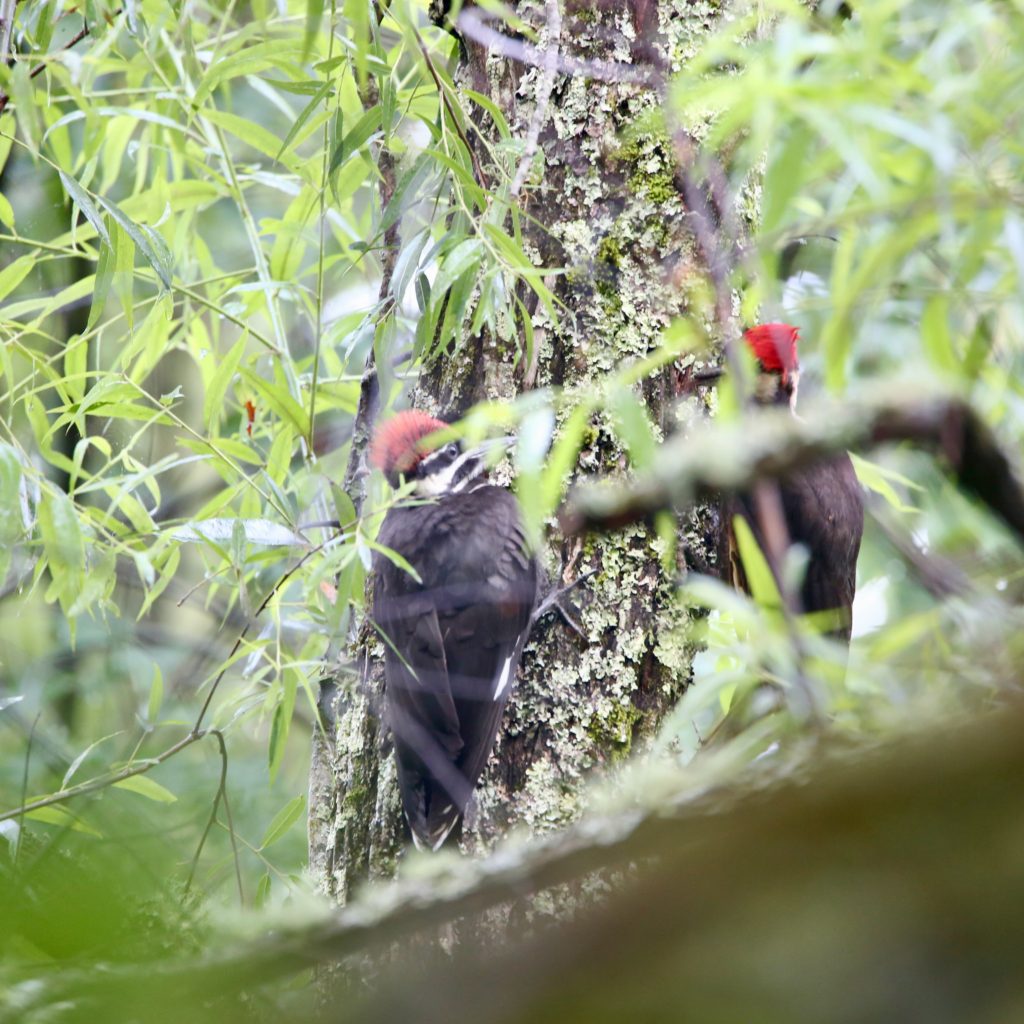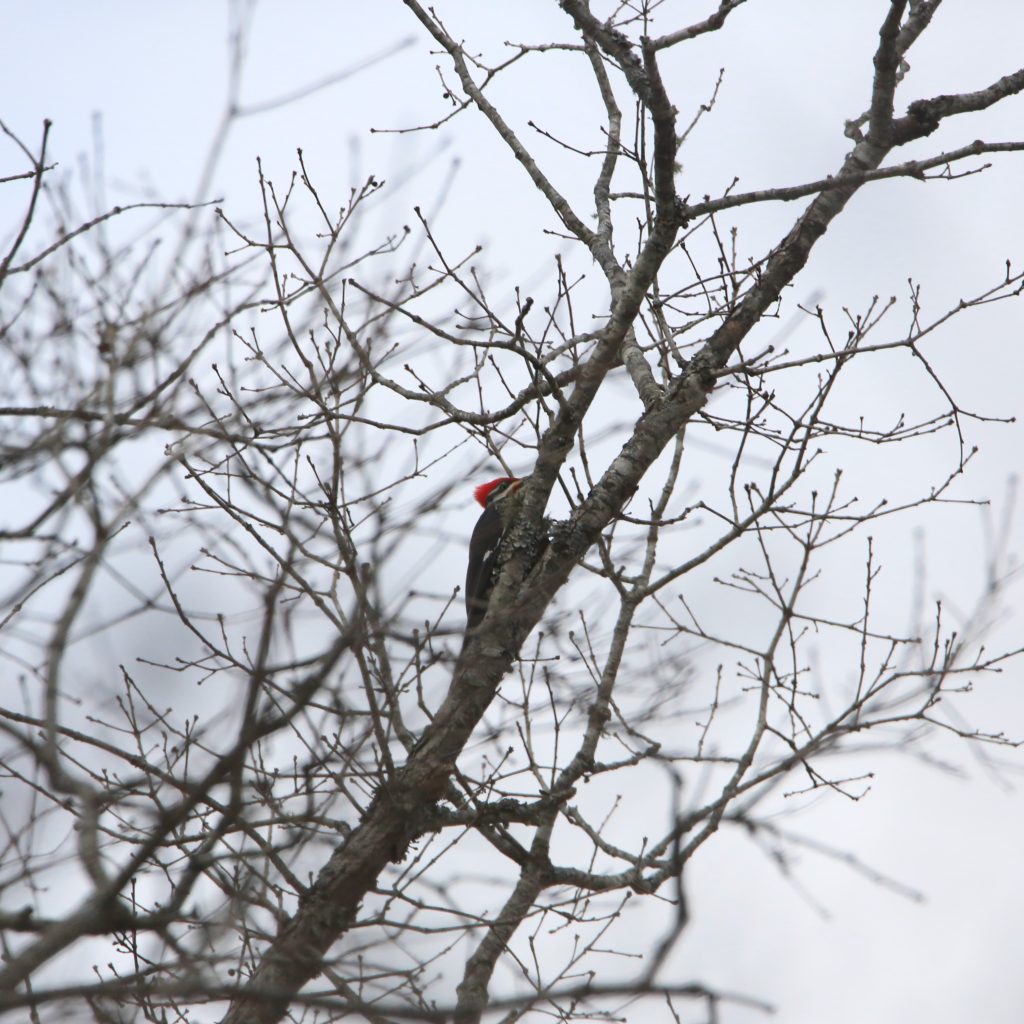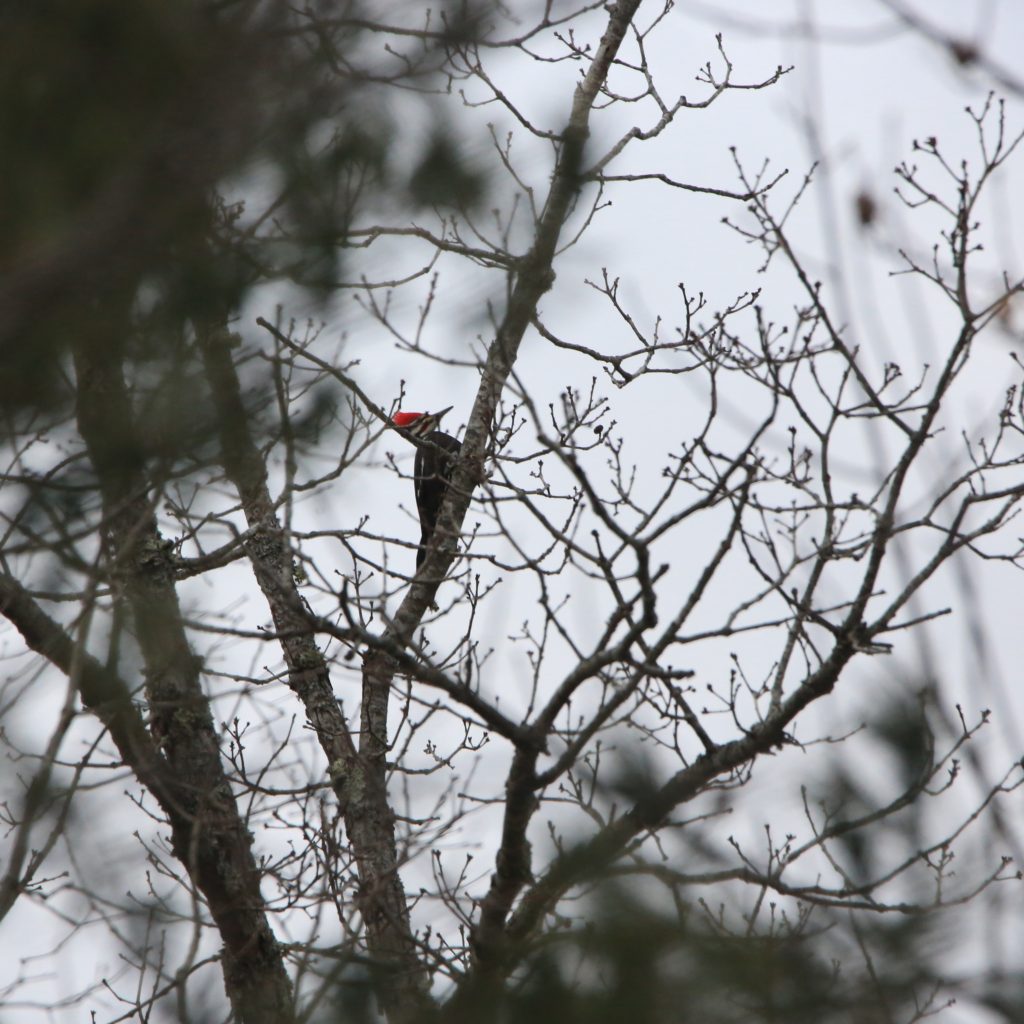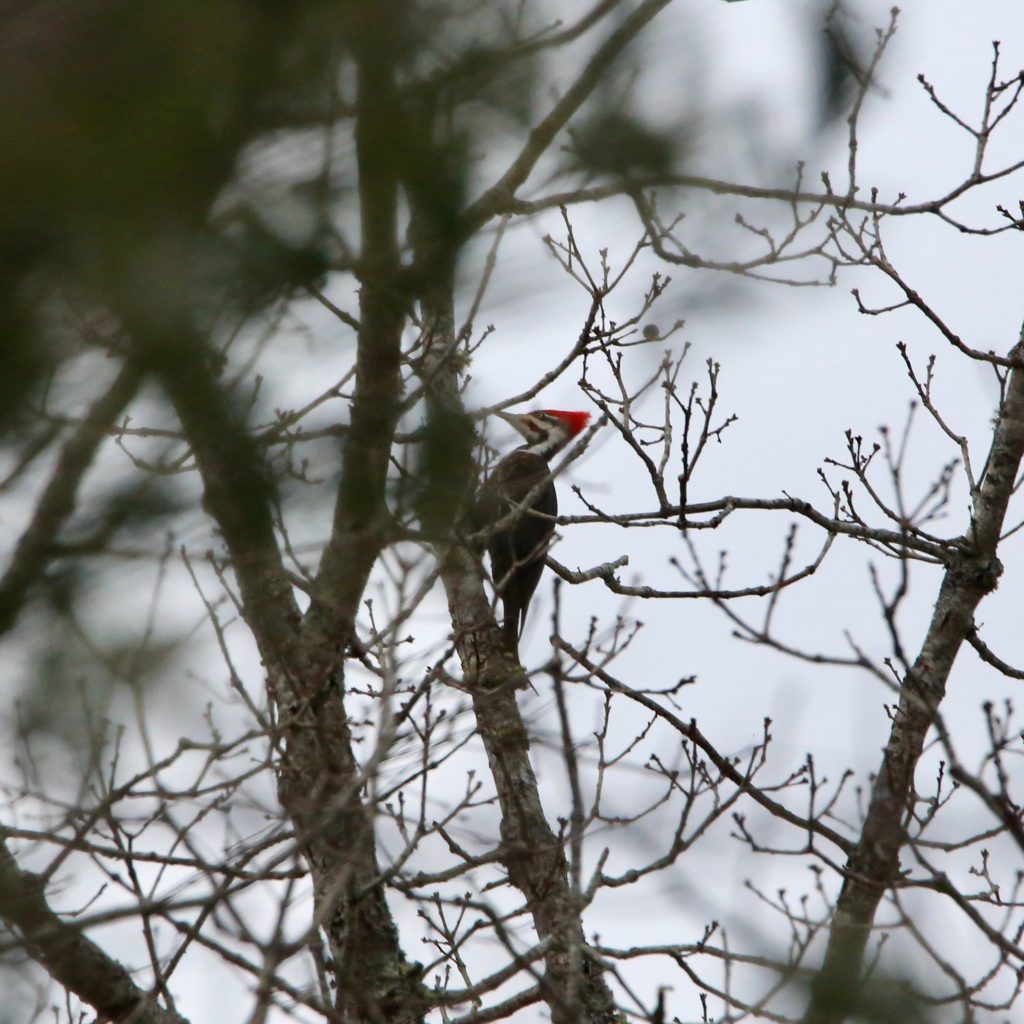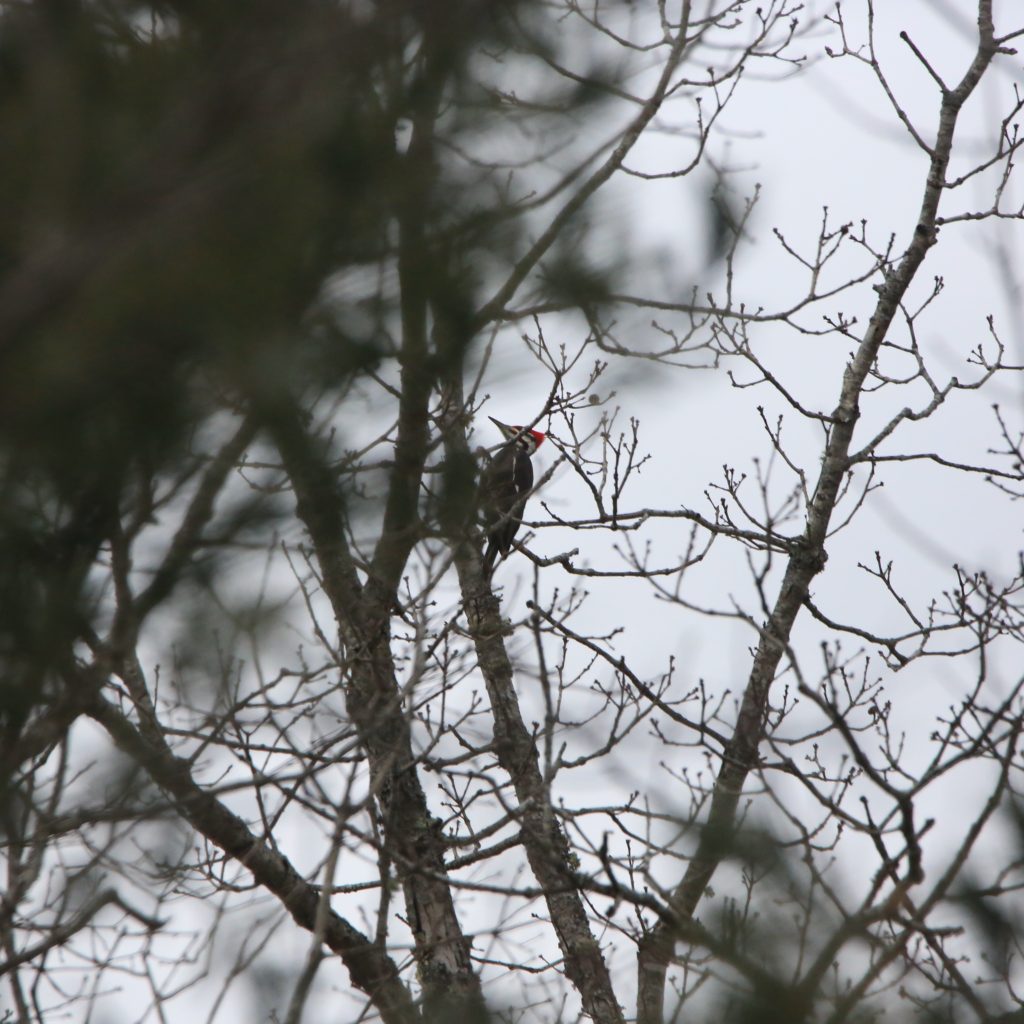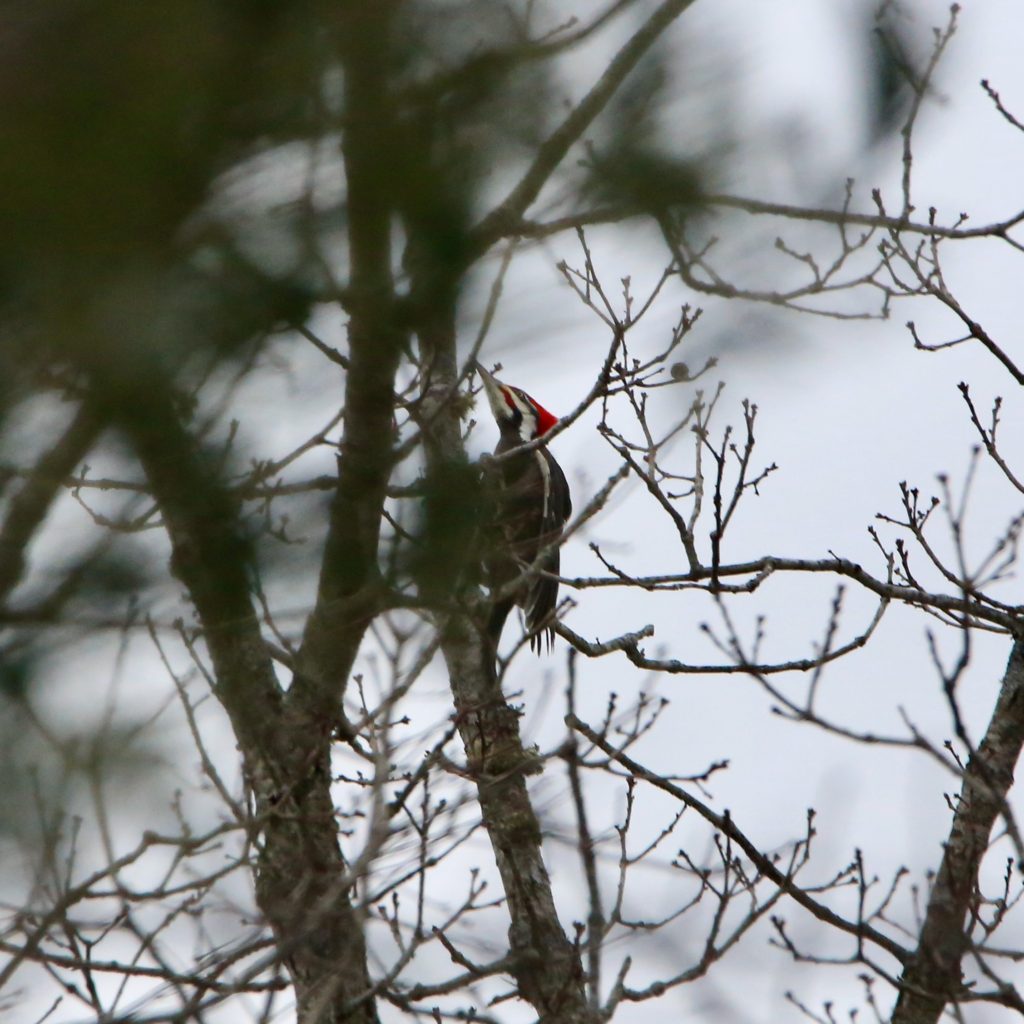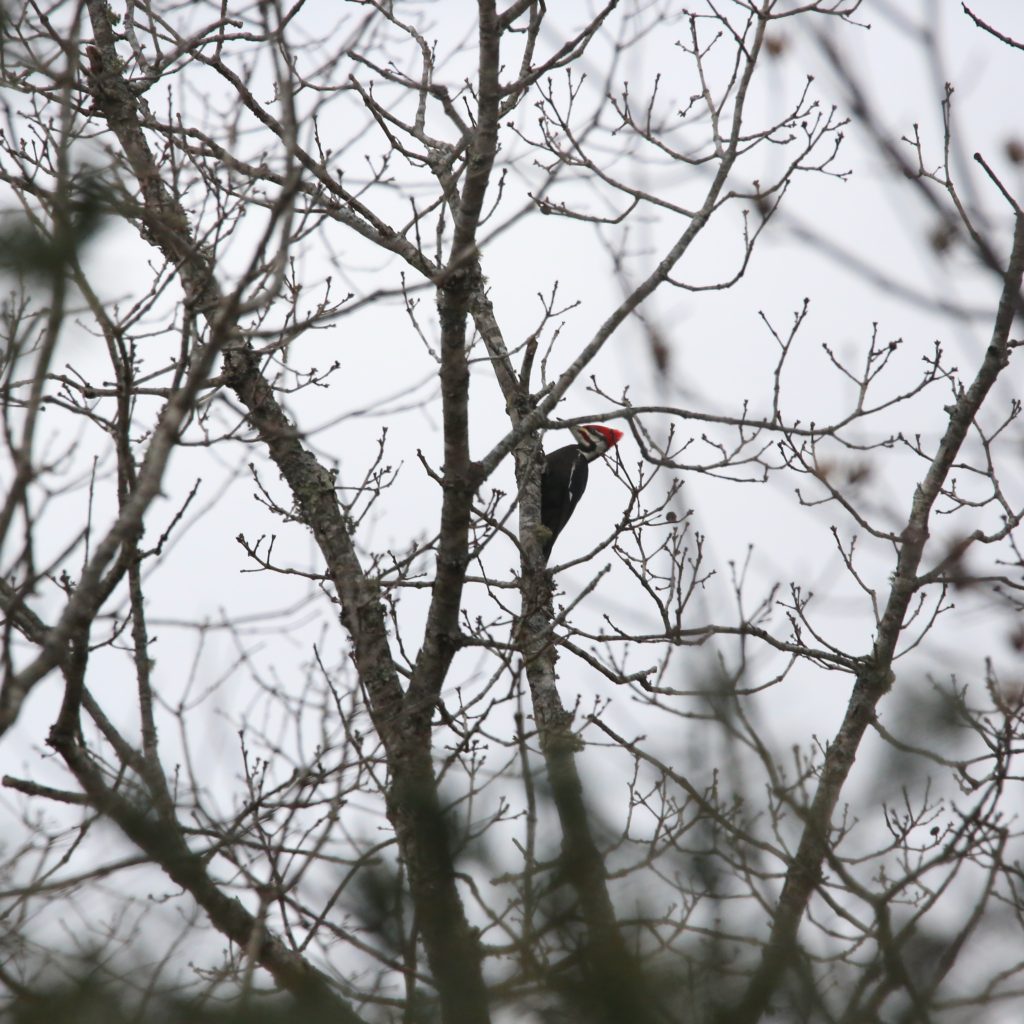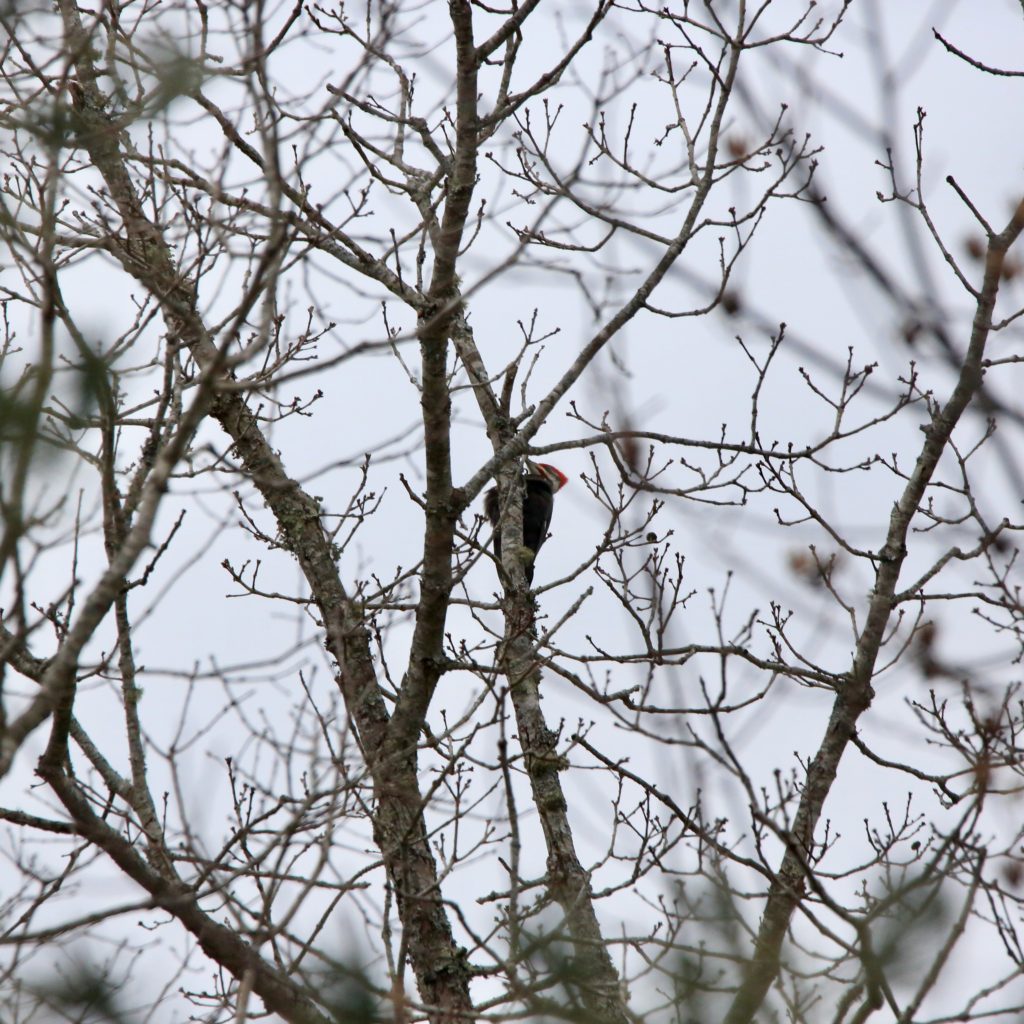
Pileated Woodpecker
A Pileated Woodpecker is a fun bird to see while bird watching. Below are some tips to help you identify Pileated Woodpeckers. We have also put together a list of fun Pileated Woodpecker t-shirts, Pileated Woodpecker bird patches, bird houses, bird feeders, binoculars, stickers and other fun bird watching items.
About Pileated Woodpeckers
It is one of the most striking and largest forest birds in North America, having the size of a crow. It characteristically drills triangular holes on the barks of trees being so broad that the Pileated Woodpecker can break a small tree in half.
Pileated Woodpecker Color Pattern
Most of the Pileated Woodpeckers body is black with white streaks on its face and neck. Their small heads are adorned with a hard to miss red crown. During the flight, they are seen to have white underwings and small white patches on its upper parts. Males have a red line on their cheek.
Description and Identification
Pileated Woodpeckers are striking birds with red, black, and white markings. They are large woodpeckers and have white face stripes that go onto their necks. Their red crests make them easily identifiable as they cling to the sides of trees. Males also have a red cheek strip, but females don’t have this particular marking. Their bills are hefty, long, and pointed. Their wings are black, which contrasts sharply with the red and white on their heads and neck. There are white markings on their chests and wings as well. Their wings are greyish black near the front, have a white stripe in the middle, and the ends of the feathers are black. Underwings are white, and their tails are black.
Pileated Woodpecker Size
It is a large woodpecker with a triangular crest on top of its rather medium-sized head. It has a long neck which helps it drill and digs holes on tree barks. Pileated woodpeckers have chisel-shaped bills which are long, about the length of its head. Adult woodpeckers have nearly the same size as crows with both sexes having the following measurements.
- Length 40 – 49 cm
- Weight 250 – 330 g
- Wingspan 66 – 75 cm
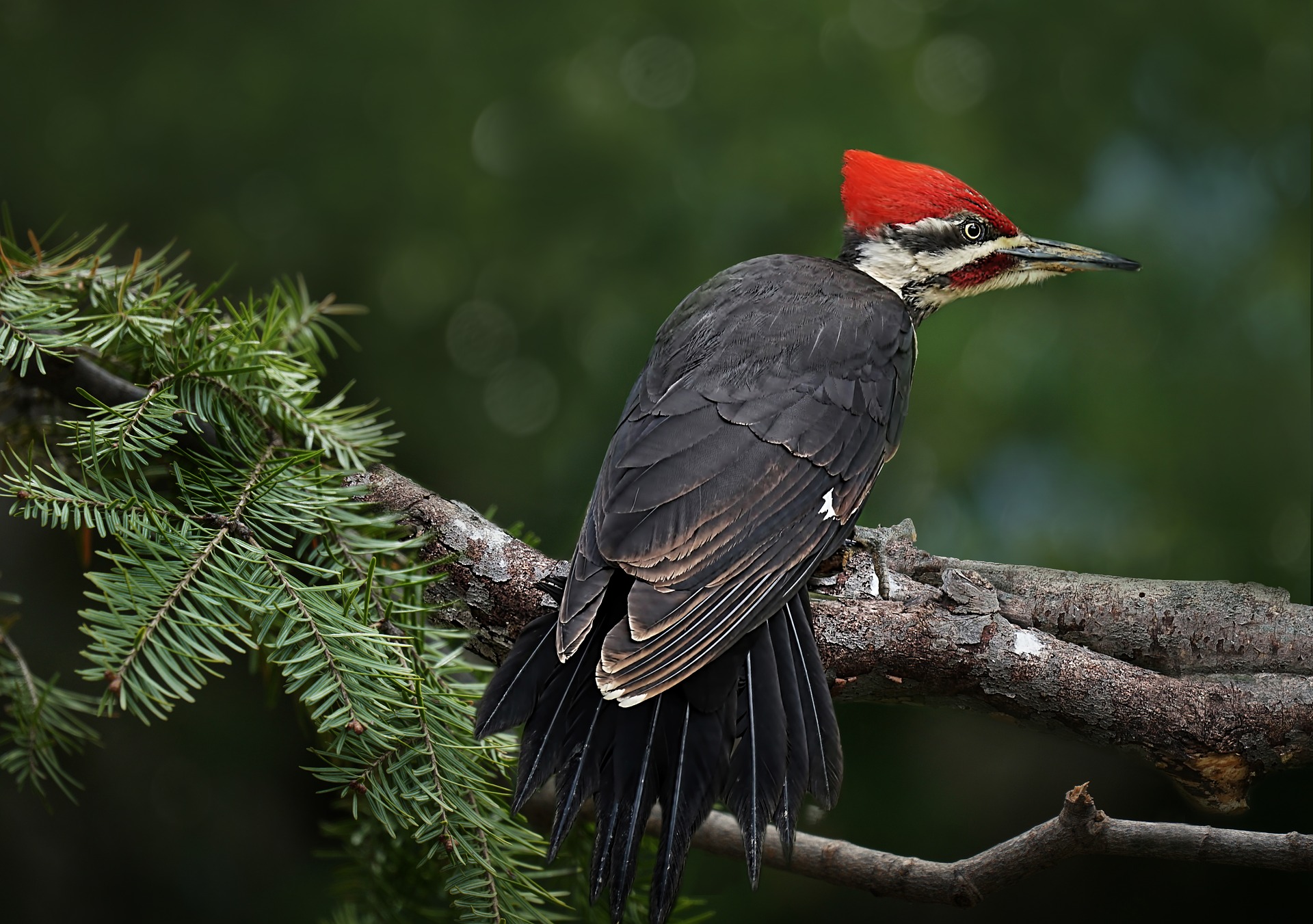
Pileated Woodpecker Behavior
The Pileated Woodpecker forages in dead woods where it stands on dead trees or logs laying down on the forest floor. They excavate holes which can be more than a foot long on wood. The holes made are to pursue carpenter ants which is the woodpecker’s primary food. They are monogamous birds that hold large territories and the pairs last for years.
What Pileated Woodpecker Eat
Insects are the preferred main course of Pileated Woodpeckers. They use their sharp beaks to probe, excavate, and pry dead wood apart, looking for them. They can put holes in decaying wood to hit the mother lode of ant nests, and they can also rip stumps and logs apart to find insects. They love carpenter ants, as well as other kinds of ants, termites, flies, spruce budworm, woodboring beetle larvae, caterpillars, cockroaches, and grasshoppers. They are also known to be acrobatic in little branches to get hold of berries as well. Pileated Woodpeckers also eat nuts. They’ll hit up backyard bird feeders as well for an extra snack or two.
Carpenter ants and other ants are the Pileated Woodpeckers primary food. They eat wild fruits and nuts including blackberries and poison ivy. Woodpeckers also visit bird feeders for seeds and grains.
Where Pileated Woodpeckers Live and their Habitat
These birds live in deciduous forests or mixed deciduous-coniferous woodlands. Additionally, they live in coniferous-only forests. You’ll find them in forests of hemlock in the Northwest and in beech and maple forests in New England. They also live in cypress swamps in the Southeast. Their numbers significantly declined about a hundred or so years ago as forests were cut down. They live in younger forests with dead trees here and there or decaying wood that is on the ground. You’ll also find them in suburban areas with mature trees and areas of woodland. They seem to be able to successfully adapt to having humans nearby and to living in second-growth woods.
They are permanent residents of deciduous woods and maple forests In New England. They are not uncommon to young, open and scattered tree forests with a ready supply of dead wood
Range and Migration

Pileated woodpeckers are present in parts of Canada and the United States. Their range is mostly in the eastern half of the U.S. and parts of eastern Canada. However, they also have a wide range in western Canada as well. In the western parts of the United States, they are present in northern Washington, Idaho, western and part of northeastern Oregon, western Montana, and in parts of north and eastern California. They do not have a strong presence in the grasslands of the United States or the Rocky Mountains. These birds live permanently in the areas in which they reside; however, individuals wander at times from breeding regions.
Pileated Woodpecker Lifecycle
Pileated woodpeckers fight for nesting sites with wood ducks and other woodpeckers which is mostly in dead trees. On some occasions, the pileated woodpecker may share its cavity with bats. The male does most of the work of digging into the tree. The female lays 3 to 5 eggs in a single breeding season and incubates them for 18 days. Chicks take only 31 days before they leave the nest and tree cavity.
Nesting
Pileated Woodpeckers like to build nests in different areas. They’re usually in dead trees in a mature or old stand of trees. However, you will also find them in dead trees in younger forests and even in cities. They like dead trees because they are good places for nests and shelter, and these birds will fight for their space in them with other birds and animals. Bats and swifts are known to share some spaces in roost cavities with Pileated Woodpeckers. Males begin excavating the nest hole and do most of the work, while females help and add their contributions mostly toward the end. The entrance hold is not circular, like most woodpecker nest holes. It’s more of an oval shape. As the nest nears completion, one of them will get inside and peck from there. They use wood chips from the excavation to line the nest, and it takes three to six weeks to build a nest with a depth from about 10 to 24 inches.
Ornithology
Bird Watching Academy & Camp Subscription Boxes
At Bird Watching Academy & Camp we help kids, youth, and adults get excited and involved in bird watching. We have several monthly subscription boxes that you can subscribe to. Our monthly subscription boxes help kids, youth, and adults learn about birds, bird watching, and bird conservation.
Bird Watching Binoculars for Identifying Pileated Woodpeckers
The most common types of bird watching binoculars for viewing Pileated Woodpeckers are 8×21 binoculars and 10×42 binoculars. Bird Watching Academy & Camp sells really nice 8×21 binoculars and 10×42 binoculars. You can view and purchase them here.
Pileated Woodpecker 3D Paper Craft Model
This Pileated Woodpecker 3D papercraft model is a great way to learn about birds and have fun doing it. This model is like a puzzle where you have to connect the pieces together. It is designed for adults or skilled crafty teens. The difficulty level is medium to hard but is fun.
- Pileated Woodpecker 3D Paper Craft ModelProduct on sale$4.99
Pileated Woodpecker T-shirts
If you love the Pileated Woodpecker you should purchase a Bird Watching Academy & Camp T-shirt. To help support bird conservation we donate 10 percent to bird conservation activities.
Pileated Woodpecker Iron On Patches
Kids, Youth, and Adults love to collect our Bird Watching Academy & Camp iron on patches. Our bird watching patches help you keep track of the birds you have seen an identified. You can also display the patches on our Bird Watching Academy & Camp banners.
The Pileated Woodpecker is a great iron on patch to start your collection with. The patches are durable and can be sewn on or ironed on to just about anything.
Pileated Woodpecker Stickers
Stickers are a great way for you to display your love for bird watching and the Pileated Woodpecker. We sell a monthly subscription sticker pack. The sticker packs have 12 bird stickers. These sticker packs will help your kids learn new birds every month.
Bird Feeders For Pileated Woodpecker
There are many types of bird feeders. Here are our favorite bird feeders for your backyard. We use all of these bird feeders currently. Kids will have a great time watching birds eat at these bird feeders. Using this collection of bird feeders will provide a wide variety and many types of birds.
Best Bird Houses for Pileated Woodpecker
There are many types of bird houses. Building a bird house is always fun but can be frustrating. These 4 bird houses have become our favorites. Getting a bird house for kids to watch birds grow is always fun. We spent a little extra money on these bird houses but they have been worth the higher price and look great.


